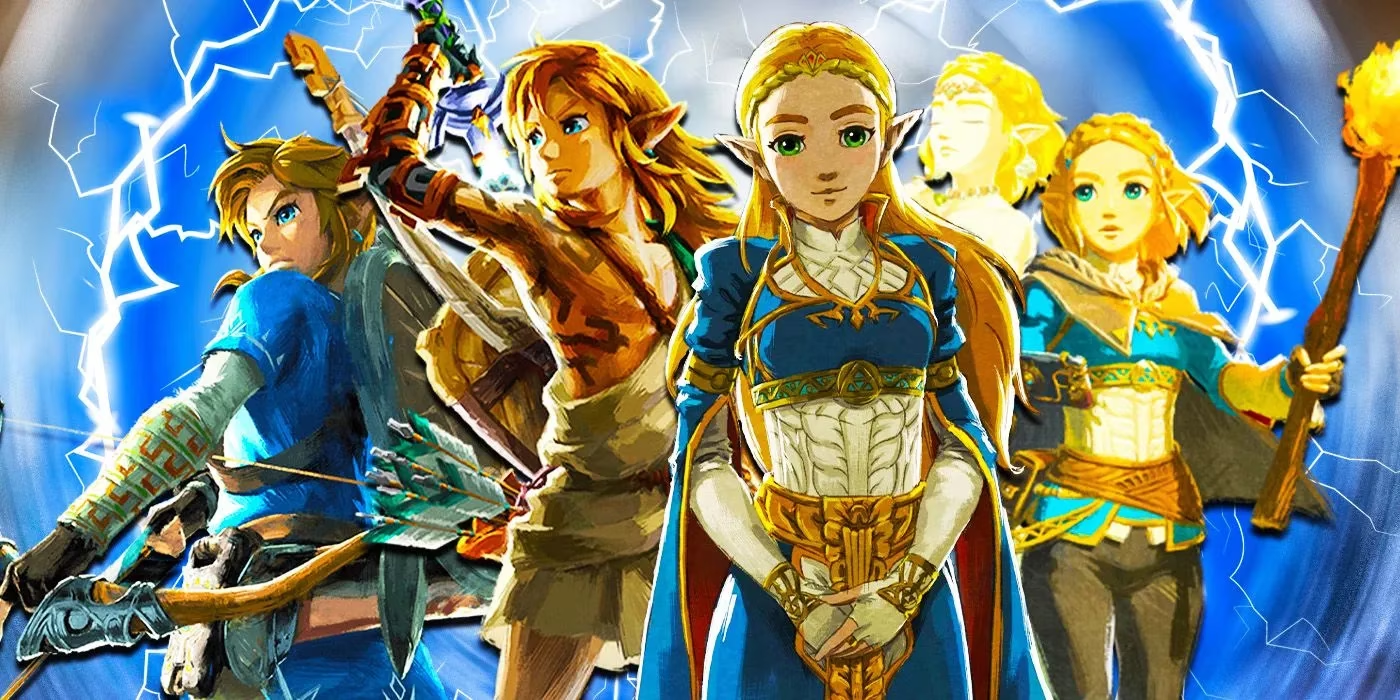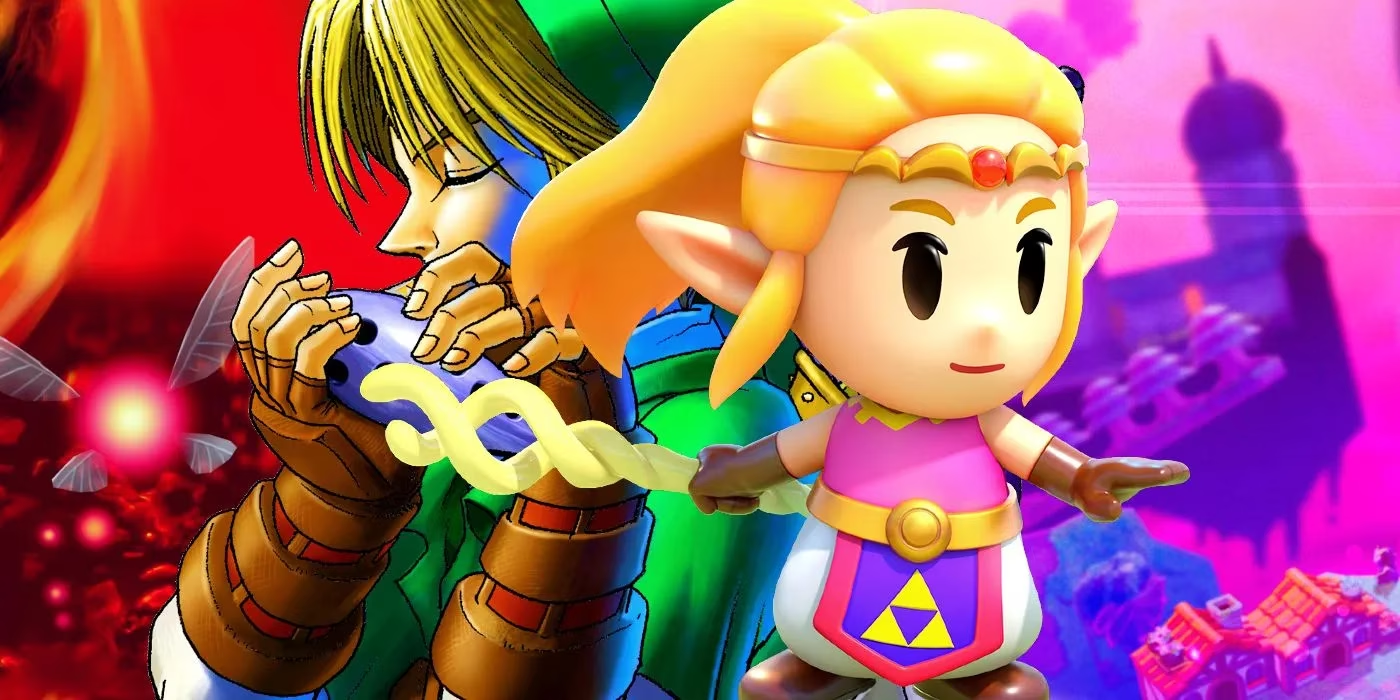Zelda's New Timeline: A Fresh Start for Hyrule
Nintendo's bold separation of Zelda's timeline sparks innovative gameplay and creative freedom, redefining Hyrule's future adventures with fresh possibilities.
It's finally happened, folks. After years of fan debates and speculation, The Legend of Zelda: Breath of the Wild and its sequel Tears of the Kingdom have been officially carved out from Nintendo's convoluted timeline and placed on their own separate path. This decision, announced recently, feels like a gust of fresh air blowing through the dusty corridors of Hyrule's history. Imagine waking up to find an old, tangled garden hose finally untwisted—suddenly, there's space to water new flowers without tripping over knots. For the development team, it's a sigh of relief; no longer do they need to juggle decades of lore like a circus performer balancing too many spinning plates. Players, too, can breathe easier, as this move signals a bold shift towards innovation rather than rigid adherence to the past. Still, it leaves questions hanging: Will this clean slate foster richer adventures, or is it a temporary escape? Time will tell.
Why Splitting the Timeline Makes Sense
Separating BOTW and TOTK from the old Zelda timeline isn't just a neat organizational trick—it's a strategic masterstroke that benefits everyone involved. Think of the original timeline as a sprawling, overgrown forest where every tree represents a game; navigating it required a map that branched into three confusing paths after Ocarina of Time. That forest had become so dense that adding new saplings like BOTW felt like squeezing a giant oak into a crowded thicket. Now, with a fresh clearing, Nintendo can plant seeds without worrying about roots entangling with ancient oaks. This isn't just about clarity; it's about unleashing creativity. Developers no longer bear the weight of historical baggage, allowing them to experiment freely with the open-world style that defined BOTW. It's akin to giving an artist a blank canvas instead of forcing them to paint over a faded masterpiece—suddenly, the possibilities bloom like wildflowers after a rainstorm.

Here’s a quick look at the core benefits:
-
Reduced Burden: The team can focus on new stories without retrofitting old narratives, like a chef inventing a new recipe instead of tweaking grandma's century-old cookbook.
-
Creative Freedom: Freed from continuity constraints, future games might introduce radical elements, such as non-linear quests or character arcs that defy tradition.
-
Easier Remakes: Revamping classics becomes simpler—picture polishing a vintage car without adding modern gadgets that clash with its original design.
The Ripple Effect on Fan Theories and Future Games
Of course, this timeline split hasn't pleased everyone, especially the dedicated theorists who've spent years stitching together clues from across the series. Some well-crafted ideas, like those placing BOTW millennia after Skyward Sword, now crumble like sandcastles at high tide. Yet, this doesn't deter the community; if anything, it fuels their passion. Fans are like astronomers peering at distant stars—even when one theory fades, they'll spot new constellations in the smallest details of TOTK's landscapes. This dynamic keeps the Zelda universe alive and buzzing with debate. But let's not overlook the broader implications for the franchise. With two distinct timelines—one for the classics and one for modern adventures—Nintendo can cater to diverse tastes. For instance:
| Aspect | Old Timeline | New Timeline |
|---|---|---|
| Style | Linear, dungeon-focused | Open-world, exploration-heavy |
| Developer Flexibility | Constrained by lore | High freedom, akin to sailing uncharted seas |
| Fan Engagement | Theory-heavy speculation | Fresh mysteries to solve |
This duality enriches the series, much like how rivers split to form fertile deltas. And with remakes on the horizon, such as potential updates to Ocarina of Time, the separation means additions won't feel forced. It’s a win-win: classics stay pure, while new entries evolve.
Unleashing Creative Potential
Freeing BOTW and TOTK from the old timeline isn't just a logistical tweak—it's a catalyst for innovation. By removing the straitjacket of continuity, the development team can dive into bold experiments without fear of contradictions. Imagine them as architects given a virgin plot of land; they can build skyscrapers or cozy cottages, unrestrained by zoning laws. This shift aligns with reports that future Zelda games will continue BOTW's open-world ethos, perhaps introducing elements like dynamic weather systems or player-driven narratives that would've clashed with past games. But what about the risk of losing cohesion? Well, it's a small price for progress. As one developer might say, it's better to explore new horizons than retread old paths.

Key takeaways for creativity:
-
:sparkles: New Mechanics: Expect innovations like customizable gear or AI companions that adapt to player choices.
-
:game_die: Story Arcs: Self-contained tales avoid the pitfalls of convoluted crossovers, much like short stories vs. epic sagas.
-
:art: Artistic Direction: Visual styles can shift dramatically, from pixel art to hyper-realistic landscapes.
Looking Ahead: Possibilities and Unanswered Questions
As we stand in 2025, the future of Zelda feels as wide-open as Hyrule Field after a storm. This timeline reset might inspire standalone spin-offs or even cross-media ventures, but it also raises intriguing what-ifs. Will Nintendo revisit the classic timeline for nostalgic hits, or double down on the new one? And how will fans reconcile their headcanons with official lore? Like a puzzle missing a few pieces, it's intentionally incomplete—inviting players to fill gaps with imagination. Ultimately, this separation isn't about erasing history; it's about honoring it while forging ahead. After all, a great series thrives on evolution, not stagnation. So, grab your sword and shield—adventure awaits, untethered and full of promise. :shield: